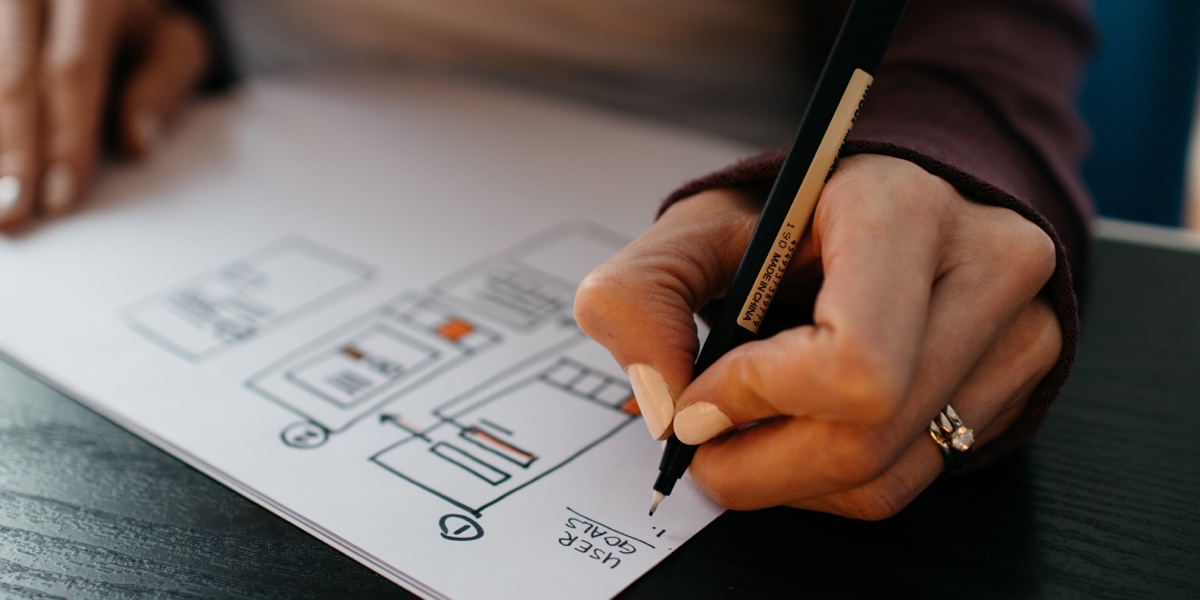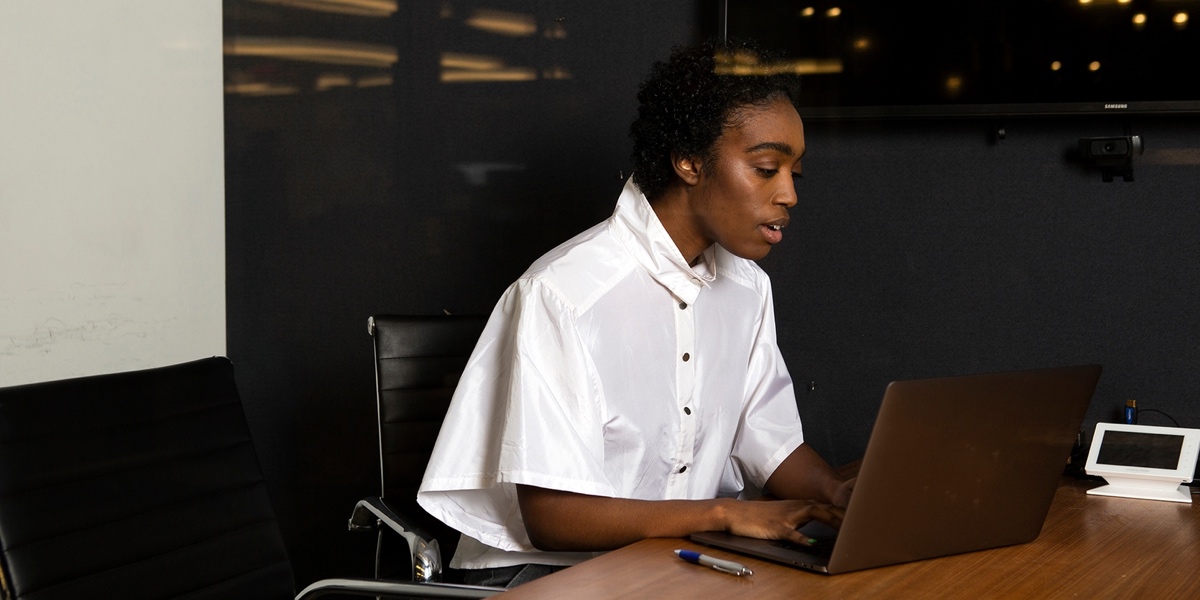If you’re looking to start a career in UX design, you’re undoubtedly wondering if the demand for UX pros is still there and how long it will stay. Let’s find out.
The rapid advancement of the internet, technology, and social media has been an integral part in giving consumers greater purchasing power and higher expectations when it comes to interacting with digital products. In 2016, over one trillion of retail sales were influenced by mobile design alone and since 2015, mobile web-influenced sales have outweighed non-web-influenced sales.
In response to these trends, companies are doing everything they can to make sure their users’ mobile and web experiences are positive ones. This is where UX designers come in. The role is flexible—what they will do varies greatly depending on the company they’re working in.
But how in demand are UX designers really? And what does the future look like for UX designers? We’ve done some research to find out. In this article, we’ll take a peek at the global demand for UX designers as well as breakdown some crucial data about the overall career outlook.
Here’s what we’ll cover:
- What is the career outlook for UX designers?
- Where is the demand for UX designers?
- What will you earn as a UX designer?
- Key UX design skills to cultivate
- Final thought
There’s a lot of exciting information to share so let’s get started!

Photo by Kelly Sikkema on Unsplash
1. What is the career outlook for UX designers?
The demand for UX designers is steadily increasing. LinkedIn even ranked UX design as one of the top 5 in demand skills as of 2020 while Glassdoor added it to their list of best 50 jobs to have in 2022.
This is largely due to the corporate world gaining a greater understanding of UX design and how investing in UX design teams can greatly affect their revenue and overall business goals. And CNN Money predicts the demand for UX designers to grow by 13% from 2017-2027.
Even Google considers UX to be such an important aspect of a company’s website that they added it to their ranking algorithm. This update was called Google Page Experience and means that if Google doesn’t think your users will have a good experience on your page, the ranking of your site could be affected and possibly lowered.
And since the start of the Covid-19 pandemic, more and more companies have expanded their online offerings to accommodate unexpected changes (like working remotely, ordering more services for delivery, etc.).
Moreover, businesses are being forced to invest more into their UX in order to maintain a competitive edge in today’s tech-heavy market. In some places, the need for UX design team members is higher than the number of designers available. This gap is keeping UX designers in high demand across the globe.
Learn more: What to expect in UX after Covid-19
2. Where is the demand for UX designers?

Image credit: The Gender Spectrum Collection
One of the best ways to see where UX designers are in demand (across the globe) is to do some quick searches on sites like Glassdoor, LinkedIn, or Indeed. You can easily search “UX designer jobs” in your city or places you are willing to relocate to and see how many available positions are listed.
As of this writing, here are the number of job listings available on both Indeed and Glassdoor:
New York, NY: Glassdoor, 797; Indeed, 584
Bangalore, India: Glassdoor, 824; Indeed, 651
San Francisco, CA: Glassdoor, 535; Indeed, 391
Berlin, Germany: Glassdoor, 591; Indeed, 682
London, England: Glassdoor, 803; Indeed, 1134
Toronto, CA: Glassdoor, 507; Indeed, 511
These cities have some of the highest demand for UX designers as the need for quality product design increases. However, many companies are also looking for remote UX designers willing to work from home—a great option for those that can’t relocate or who love to travel frequently. In the US alone, Glassdoor lists over 1,000 remote UX positions needing to be filled, while Indeed lists over 1,300. If you’re interested in working from wherever your home is in the world, you can find even more remote work through job boards that focus on remote jobs.
3. What will you earn as a UX designer?

With such a high demand for these roles, salaries for UX designers are becoming a bit more competitive as companies are willing to spend a bit more on hiring a quality design team.
Here are some expected salaries for some of the countries with the highest demand for UX designers:
United States
- Low: US$69,600
- High: US$114,300
Canada
- Low: CA$50,000
- High: CA$101,800
United Kingdom
- Low: £30,600
- High: £65,700
Germany
- Low: €34,500
- High: €70,000
China
- Low: ¥126,000
- High: ¥297,000
United Kingdom
- Low: £30,600
- High: £65,700
Australia
- Low: AU$59,500
- High: AU$115,600
Get a closer look at what salary you could earn as a UX designer.
4. Key UX design skills to cultivate
The overall outlook for a career in UX design is very promising. And while UX designers are in high demand in general, there are particular skills and assets that are more needed than others. Here we’ll take a look at some highly sought-after skills in the UX industry today.
Specialist jobs
Depending on the project or company you work with, you may be the sole UX designer and responsible for every step of the design process. However, with more organizations putting aside greater resources for UX design teams there is a trend of splitting the work and investing more in specialty roles like UX researchers and writers, UX/UI frontend developers, information architects and usability analysts.
Business acumen
UX designers with the ability to work outside of the purely creative space and apply business technique and objectives to their designs are highly desirable in the current market. In a post-pandemic world, employers are more likely to focus efforts on securing financial stability as well as customer satisfaction. Therefore, designers that can tie quality user experience to tangible business results are in demand.
Ability to work remotely
As we mentioned above, the capability for UX designers to work remotely is becoming an attractive attribute to employers and hiring managers as UX talent is of greater value than location. Not only is the ability to collaborate with colleagues across time zones becoming more important, but having good knowledge of conducting remote usability testing and user research is also crucial.
To learn more about what it’s like to work as a remote UX designer, check out this article: A Day in the Life of a Remote UX Designer. What’s more, you could watch this video, where remote UX designer Maureen lets you tag along with her on a typical working day:
More empathy across organizational silos
Just like the need for UXers to be aware of business objectives is increasing, the ability for UX designers to be aware of what their colleagues outside of the design team are experiencing is another key attribute for designers to have. Designers that can integrate the needs of their users, frontend developers, customer service, marketing, etc. into their designs are some of the most competitive candidates.
Relevant auxiliary skills
Auxiliary skills are attributes and abilities that aren’t specific to design but can boost your overall value as a designer. For instance, a UX designer that has a background in coding, psychology, marketing, or research can be of higher value in the industry. Having non-design skills that supplement your UX work has the potential to make you a more well-rounded designer and a more attractive candidate to potential employers.
5. Final thought
If you’ve been on the fence about pursuing a career in UX design, rest assured that your prospects as a new UX professional are promising—especially if you can cultivate a skillset that sets you apart. The demand is high and seems to only be increasing as the need for exceptional usability and intuitive digital products continues to soar.
And if you want to get ahead of the game, explore the top current trends in UX design (some of these might surprise you!)


